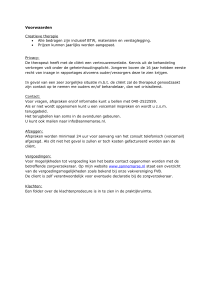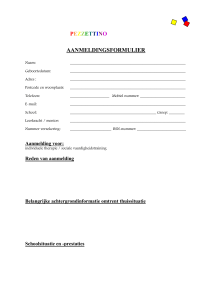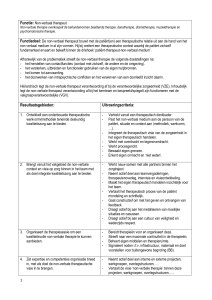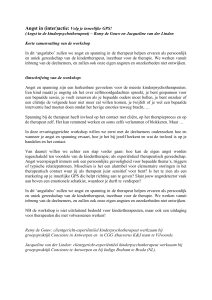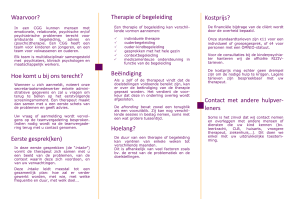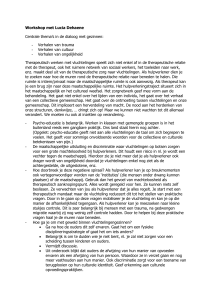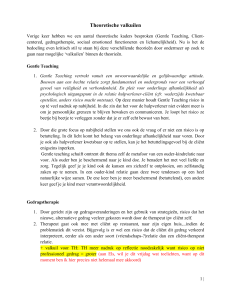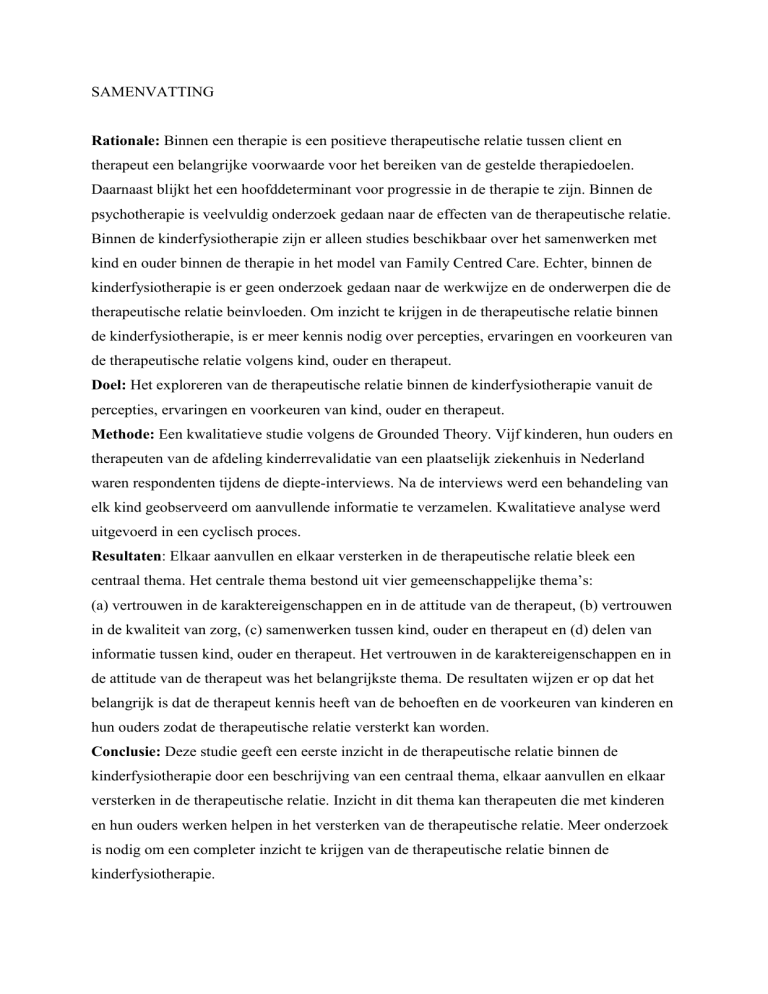
SAMENVATTING
Rationale: Binnen een therapie is een positieve therapeutische relatie tussen client en
therapeut een belangrijke voorwaarde voor het bereiken van de gestelde therapiedoelen.
Daarnaast blijkt het een hoofddeterminant voor progressie in de therapie te zijn. Binnen de
psychotherapie is veelvuldig onderzoek gedaan naar de effecten van de therapeutische relatie.
Binnen de kinderfysiotherapie zijn er alleen studies beschikbaar over het samenwerken met
kind en ouder binnen de therapie in het model van Family Centred Care. Echter, binnen de
kinderfysiotherapie is er geen onderzoek gedaan naar de werkwijze en de onderwerpen die de
therapeutische relatie beinvloeden. Om inzicht te krijgen in de therapeutische relatie binnen
de kinderfysiotherapie, is er meer kennis nodig over percepties, ervaringen en voorkeuren van
de therapeutische relatie volgens kind, ouder en therapeut.
Doel: Het exploreren van de therapeutische relatie binnen de kinderfysiotherapie vanuit de
percepties, ervaringen en voorkeuren van kind, ouder en therapeut.
Methode: Een kwalitatieve studie volgens de Grounded Theory. Vijf kinderen, hun ouders en
therapeuten van de afdeling kinderrevalidatie van een plaatselijk ziekenhuis in Nederland
waren respondenten tijdens de diepte-interviews. Na de interviews werd een behandeling van
elk kind geobserveerd om aanvullende informatie te verzamelen. Kwalitatieve analyse werd
uitgevoerd in een cyclisch proces.
Resultaten: Elkaar aanvullen en elkaar versterken in de therapeutische relatie bleek een
centraal thema. Het centrale thema bestond uit vier gemeenschappelijke thema’s:
(a) vertrouwen in de karaktereigenschappen en in de attitude van de therapeut, (b) vertrouwen
in de kwaliteit van zorg, (c) samenwerken tussen kind, ouder en therapeut en (d) delen van
informatie tussen kind, ouder en therapeut. Het vertrouwen in de karaktereigenschappen en in
de attitude van de therapeut was het belangrijkste thema. De resultaten wijzen er op dat het
belangrijk is dat de therapeut kennis heeft van de behoeften en de voorkeuren van kinderen en
hun ouders zodat de therapeutische relatie versterkt kan worden.
Conclusie: Deze studie geeft een eerste inzicht in de therapeutische relatie binnen de
kinderfysiotherapie door een beschrijving van een centraal thema, elkaar aanvullen en elkaar
versterken in de therapeutische relatie. Inzicht in dit thema kan therapeuten die met kinderen
en hun ouders werken helpen in het versterken van de therapeutische relatie. Meer onderzoek
is nodig om een completer inzicht te krijgen van de therapeutische relatie binnen de
kinderfysiotherapie.
ABSTRACT
Rationale: In therapy a positive patient-therapist relationship between client and therapist is
an important prerequisite for reaching therapeutic goals. It is also known to be a key
determinant for progress in therapy. In psychotherapy effects of this relationship have been
studied extensively. Concerning pediatric physiotherapy, only studies are available how to
collaborate in therapy with child and parent in a model of Family Centred Care. However, in
pediatric physiotherapy no research has been conducted into the process and topics
affecting the therapeutic relationship. To gain insight of the therapeutic relationship in
pediatric physiotherapy, more knowledge is needed about perceptions, experiences and
preferences of the therapeutic relationship according to child, parent and child therapist.
Purpose: To explore the therapeutic relationship in pediatric physiotherapy from the
perceptions, experiences and preferences of child, parent and therapist.
Methods: In a qualitative study based on the Grounded Theory, five children, their parents
and therapists from the department pediatric rehabilitation of a local hospital in The
Netherlands, served as respondents during in-depth interviews. After the interviews, a
treatment of each child was observed in order to collect additional data. Qualitative analysis
was performed in a cyclic process.
Results: Complementary and mutual reinforcement in the therapeutic relationship emerged as
a central theme. This theme consisted of four common themes: (a) trust in the characteristics
and in the attitude of the therapist, (b) trust in the quality of care, (c) collaboration between
child, parent and therapist, and (d) sharing of information between child, parent and therapist.
Trust in the characteristics and in the attitude of the therapist was the most important theme.
The results indicate that it is important for therapists to know the needs and preferences of the
children and their parents to strenghten the therapeutic relationship.
Conclusion: This study provides a first insight in the therapeutic relationship in pediatric
physiotherapy by a description of a central theme, complementary and mutual reinforcement
in the therapeutic relationship. This information can assist therapists working with children
and their parents to strenghten the therapeutic relationship. More research is needed to get a
more complete insight in the therapeutic relationship in pediatric physiotherapy.


